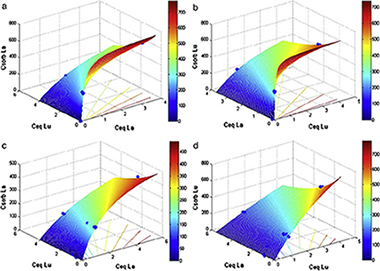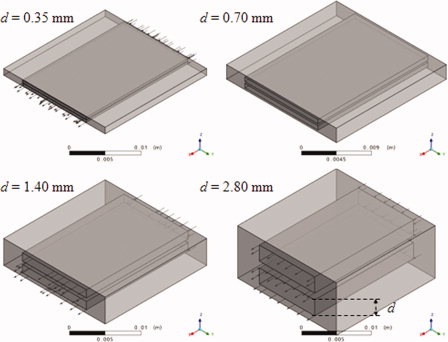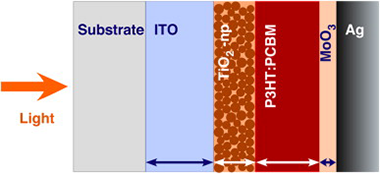Artículos SCI
2012
2012
Nanotecnología en Superficies y Plasma
Wall slip phenomena in concentrated ionic liquid-based magnetorheological fluids
Gomez-Ramirez, A; Lopez-Lopez, MT; Gonzalez-Caballero, F; Duran, JDGRheologica Acta, 51 (2012) 793-803
Show abstract ▽

Ionic liquids (ILs) have been recently proposed as carrier for magnetorheological (MR) fluids. Their special properties, such as very low vapor pressure and high thermal stability, make ILs highly suitable dispersion media to increase the broad range of technological applications that magnetorheological fluids already have. It has been just reported that using ILs as carriers in MR fluids an improvement in the colloidal stability and suspension redispersibility is obtained. In this work, the magnetorheological behavior of highly concentrated suspensions in ILs is studied. Two kinds of suspensions were analyzed: using an ionic liquid of low conductivity and a mineral oil as carriers. In both cases, silica-coated iron microparticles were used as solid phase, being the solid volume concentration of 50% vol. A complete magnetorheological analysis focused on the wall slip phenomenon was performed. Steady-state and oscillatory experiments were carried out. In order to study wall slip effects, all experiments were performed with a plate-plate system, using both smooth and rough measuring surfaces. A significant effect of wall slip was observed when the experiments were performed using smooth surfaces. The novelty of this paper is mainly based on (1) the use of an ionic liquid as carrier to prepare magnetic suspensions, and (2) the analysis of wall slip phenomena in MR fluids with a particle content close to the maximum packing fraction.
Septiembre, 2012 | DOI: 10.1007/s00397-012-0639-5
Materiales de Diseño para la Energía y Medioambiente
Effects of the presence of Fe(0) on the sorption of lanthanum and lutetium mixtures in smectites
Galunin, E; Alba, MD; Santos, MJ; Vidal, MApplied Clay Science, 65-66 (2012) 162-172
Show abstract ▽

The sorption of La and Lu mixtures was examined in two bentonites after incubation for three months at 20 and 80 °C with Fe(0), as a laboratory approach to evaluate the effects of waste canister corrosion in a deep repository on the performance of clay engineered barriers. The sorption/desorption parameters were determined from batch tests in two ionic media: deionized water and, to consider the additional effect of cement leachates, 0.02 mol L− 1 Ca.
Results from XRD analyses showed the formation of crystalline FeO(OH), goethite, in a few samples and the degradation of the bentonites due to Fe(0) oxidation during incubation. Moreover, the EDX spectra showed that the lanthanides were sorbed primarily at smectite sites, although sorption onto goethite was also observed, whereas Fe(0) particles did not contribute to lanthanide sorption. The formation of goethite could explain the high Kd values measured in a few scenarios (e.g., those with single solutions or mixtures with the lowest initial concentration of the competitive lanthanide in which high affinity sites governed sorption), with up to 3-fold increases over the values obtained without Fe incubation. However, at higher lanthanide concentration, Kd values decreased or remained constant compared to the samples without Fe incubation, which could be explained by bentonite degradation. In the Ca medium, as much as 5 times lower Kd values were obtained, because of the competitive effect of the Ca ions, especially for Lu in the MX80 bentonite. This indicated that the small number of high affinity sites had been diminished.
The sorption data were satisfactorily fitted to a two-solute Langmuir model. In addition, Kd values correlated well with desorption data, which showed that the larger the decrease in Kd, the larger the increase in sorption reversibility. It is suggested that corrosion products from the metal canister might compromise the long-term radionuclide retention of the clay-engineered barriers.
Septiembre, 2012 | DOI: 10.1016/j.clay.2012.06.011
Química de Superficies y Catálisis
A CFD study on the effect of the characteristic dimension of catalytic wall microreactors
Arzamendi, G; Uriz, I; Navajas, A; Dieguez, PM; Gandia, LM; Montes, M; Centeno, MA; Odriozola, JAAlChE Journal, 58 (2012) 2785-2797
Show abstract ▽

A three-dimensional computational fluid dynamics study of the steam methane reforming (SMR) in microreactors is presented. Emphasis has been made on investigating the effects of the characteristic dimension (d: 0.35, 0.70, 1.40, and 2.80 mm) on the performance of two microreactor geometries: square microchannels and microslits. Results have shown that for both geometries the SMR conversion decreases markedly as d increases. Conversely, the microchannels provide a methane conversion slightly higher than that of the microslits. The different performance of the microreactors is only partially due to the different surface-to-volume ratio. Pronounced transverse temperature and concentration gradients develop as the characteristic dimension increases especially for microslits in the first half of the reactor. Therefore, external transport limitations can affect the performance of microreactors for SMR, although the characteristic dimensions are of the order of very few millimeters.
Septiembre, 2012 | DOI: 10.1002/aic.12790
Materiales Ópticos Multifuncionales
Optical interference for the matching of the external and internal quantum efficiencies in organic photovoltaic cells
Betancur, R; Martinez-Otero, A; Elias, X; Romero-Gomez, P; Colodrero, S; Miguez, H; Martorell, JSolar Energy Materials and Solar Cells, 104 (2012) 87-91
Show abstract ▽

We demonstrate experimentally that an appropriate combination of the layer thicknesses in an inverted P3HT:PCBM cell leads to an optical interference such that the EQE amounts to 91% of IQE. We observe that reflectivity between layers is minimized in a wavelength range of more than 100 nm. In that range the EQE closely matches the IQE. The role played by the optical interference in improving the performance of the fabricated solar cells is confirmed by EQE calculated numerically using a model based on the transfer matrix method. Additionally, we observed that a similar cell with an active material 1.7 times thicker exhibited a lower PCE. The poor photon harvesting in the later cell configuration is attributed to an EQE that amounts only to 72% of the IQE.
Septiembre, 2012 | DOI: 10.1016/j.solmat.2012.04.047
Materiales Nanoestructurados y Microestructura
Microstructural characterization of hydrophobic Ti1−xAlxN coatings with moth-eye-like surface morphology
Godinho, V; Lopez-Santos, C; Rojas, TC; Philippon, D; de Haro, MCJ; Lucas, S; Fernandez, AJournal of Alloys and Compounds, 536 (2012) S398-S406
Show abstract ▽

Ti1−xAlxN thin films with different Al content were deposited by magnetron sputtering. The combination of electron energy loss spectroscopy (EELS) and energy dispersive spectroscopy (EDS) was used to evaluate the composition of the coatings. The effect of Al content on the morphology and properties of the coatings was investigated. High resolution electron microscopy and related techniques revealed the formation of a pillared moth-eye-like nanostructure with variable size and distribution of meso- and nano-columns and different degree of open porosity that depends on the Al content on the coating. For low Al content (x ≤ 0.21) c-(Ti,Al)N highly porous columns ending in a sharp pyramidal shape present low reflectivity and high hydrophobicity. While the precipitation of h-AlN phase at the column boundaries for x = 0.71 suppresses the c-(Ti,Al)N columnar growth and produces a smother surface, with higher reflectivity and less hydrophobic character.
Septiembre, 2012 | DOI: 10.1016/j.jallcom.2012.02.178
- ‹ anterior
- 322 of 422
- siguiente ›














